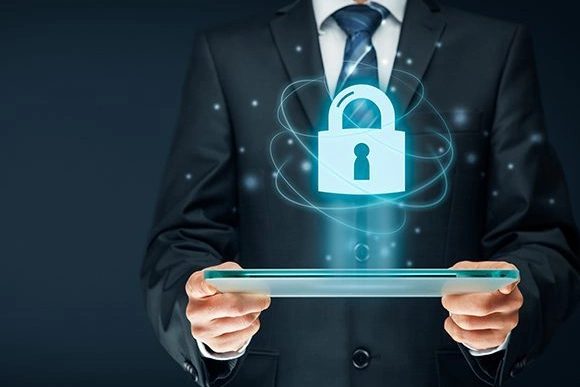Protect Your Sensitive Data From Theft
Most people know that passwords should never be shared and properly protected computing devices must be kept safe from hackers who plant malware, viruses, and other threats. We all know that best practices are recommended, but there is so much information out there it is easy to get lost – especially if you aren’t tech-savvy.
It is tempting to ignore data security. After all, billions of personal data snippets have already been siphoned off. Social security numbers, credit card data, personal addresses, phone numbers, passwords, and many other data sets have been stolen in recent years. How do we even know if we are struggling to protect data that is already for sale on the dark web? Worse, how can we even hope to protect our data when cybercriminals seem to always be one step ahead of the good guys?
Abandoning cyber security is not an option. Even though the picture may seem bleak, there are simple ways to protect your personal data that can be very effective. You may need to change your perception of what goes into protecting your personal information.
Think of it this way: You have to be defensive. Instead of trying to prevent attacks, you have to approach security as though you are protecting yourself from an unavoidable attack. When you assume you are a target, and AI-enhanced attacks can target almost everyone at the same time, you stop trying to avoid injuries and start planning how you will stop the attack and recovery quickly with less long-term damage.
Simple Ways to Protect Your Sensitive Data From Theft Online:
Number One: Install a VPN
Setting up a VPN requires almost zero effort. You do not need any cyber-security IT school training to install a VPN. Simply install an application on your phone and you’re ready to go. When used, your data will be encrypted so that information such as bank account numbers and other personal information cannot be stolen if someone tries to hack your device or display your connection.
Number Two: Update your software and peripherals when prompted
Updates are the way developers publish patches and fix the latest security threats and vulnerabilities.
Number Three: Lock your apps
We often give our smartphones to other people, friends of family members, children, co-workers, service technicians who may need to access your device, etc. Lock your apps, better to block someone you trust than give access to someone you shouldn’t.
Number Four: Create strong and unique passwords for your online accounts
If you have an online account with a data breached business, if you use the same login credentials on other accounts, a single violation could also allow hackers to access your other accounts. That’s why it’s a good idea to use a unique password for each of your online accounts.
Number 5: Limit social media sharing
Sharing too much content on social networks could put your personal information into the wrong hands. Pay attention to the images and publications you choose to share. And, use your privacy settings to limit the number of people who can see what you share.
Number 6: Do not use public storage for private information
Never use online services for information sharing to store your private data. For example, Google Docs is not the place to store a password list and Dropbox is not the best place for your passport analysis unless it is stored in an encrypted archive.
Number 7: Check the social privacy settings
We mentioned this before, but it is wise to check the default settings on your social media accounts. You may be surprised at how much information is visible to all users unless you intentionally change the settings.
Protecting Your Privacy & Your Identity Online
Protecting your privacy and identity online starts with limiting the amount of information you choose to reveal online.
Each time you share your address, phone number, date of birth, and other personal information may mean that you are at greater risk of identity theft, harassment, or cyber-blackmail. This includes the information you post on social media.
Identity thieves reconstruct your identity from publicly available online information about you. Think about the online information you have on multiple sites. Is there enough information out there to create an accurate profile? If so, reduce your risks by scrubbing non-essential files and records.
Recommended for you
-
Cloud Computing Technician Training
The “cloud” refers to resources hosted in a data center that you access over the internet. Rather than keeping data or operating applications on your own computer or in-house server.
Computer Network Technician
IT security refers to the measures taken to protect digital systems, networks, and information from theft, harm, or unauthorized interference.
Additional Security Measures
In addition to protecting your personal data and using a firewall, other measures can be taken to better secure your data. Security software and encryption mechanisms are some things that can help keep online criminals away from personal or confidential information.
Survey: Majority of Americans put their confidential data on a piece of paper, not the cloud
Last Thoughts
No protection measures are too strong in today’s online environment. There is no such thing as a company (or individual) being too prepared. Take the appropriate steps to ensure that your sensitive data is protected from theft, is in the best interest of your business, your customers and your investors, and your workforce. Be proactive. Take a few basic IT school classes to learn more about computer security.
Ready. Set. Defend Yourself.
Martin Zandi

Related Articles














